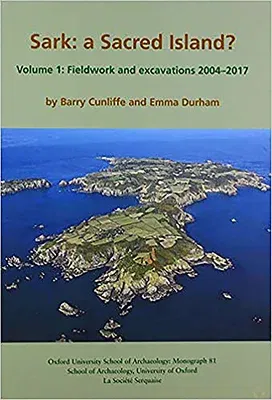Barry Cunliffe
(Author)Sark: A Sacred Island?: Volume 1 - Fieldwork and Excavations 2004-2017Hardcover, 8 February 2020

Qty
1
Turbo
Ships in 2 - 3 days
In Stock
Free Delivery
Cash on Delivery
15 Days
Free Returns
Secure Checkout

Part of Series
Oxford University School of Archaeology Monographs
Print Length
280 pages
Language
English
Publisher
Oxford University School of Archaeology
Date Published
8 Feb 2020
ISBN-10
1905905467
ISBN-13
9781905905461
Description
Product Details
Authors:
Book Format:
Hardcover
Country of Origin:
GB
Date Published:
8 February 2020
Dimensions:
30.23 x
21.84 x
2.79 cm
ISBN-10:
1905905467
ISBN-13:
9781905905461
Language:
English
Pages:
280
Publisher:
Weight:
1859.73 gm